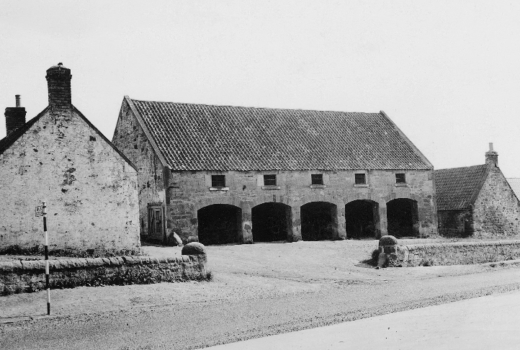Parish Representative:
Ralph W. Barker
Introduction
The general aspect of Pencaitland parish is pleasing, with a distant view of the Lammermuir hills some miles away. In 2000, the parish is much the same as it was just after the war; conditions then were not very different, except for rationing and the general relief that the war was over. Housing was difficult in some cases. Homes were required for returning servicemen, and some Polish men, ex-soldiers, remained in East Lothian and made their homes in the county, some in Pencaitland. They were soon absorbed in the local population. The fighting men who lost their lives caused a great deal of sadness, however, and these tragedies are recorded on the war memorial.
The parish covers some 2056ha (5080 acres), and is neatly bisected by the upper reaches of the river Tyne. Rising at Tynehead in Midlothian, the river enters the parish when it leaves the adjacent parish of Ormiston. Known as the Tyne Water, it becomes the river Tyne proper at its confluence with the Birns Water at Spilmersford, and shortly afterwards leaves the parish.

Pencaitland village
The main area of settlement is clustered in the twin villages of Easter and Wester Pencaitland, which are situated one on each side of the river and the A6093 road. This Haddington / A68 road crosses over an old bridge joining what were at one time separate communities. The two villages are situated at the tops of steep banks with the river flowing in between. The haughs are frequently flooded after heavy and prolonged rain, sometimes resulting in damage to crops. The hamlets (a cluster of houses without a church or a public house) of New Winton and Glenkinchie lie nearby. Scattered houses are a feature of Jerusalem (six) and the Boggs Holdings, where there is a fair sized population living on the former smallholdings, centred on the old (now privately owned) Boggs farmhouse.
The parish is well wooded with a wide variety of trees, both coniferous and deciduous. Estate policies are partly responsible for this, and the shelterbelts and the policies of Woodhall, Fountainhall and Winton House play a large part in the amenity of the village. The parish is almost entirely arable, with only a small amount of permanent or ley grass. In a way, the people of Pencaitland and its environs are fortunate in having a large city conveniently nearby, and are within easy reach of the sea and the hills. All in all it is a pleasant place to live with its ancient church, village cross and doo’cot.
